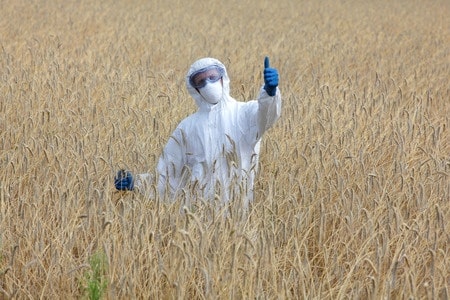
Childhood Obesity News previously quoted David Berreby’s arguments for open-mindedness, when discussing the origins of the obesity epidemic. A theory might sound outlandish, but the very fact that someone thought it plausible enough to construct an experiment or commission a study could, in some cases, be an indication that there might be substance to it.
Then, there’s the inescapable fact the some things happen in certain places and among discrete populations, but not elsewhere or among others. Mainly, with such a massive problem as worldwide obesity, it seems we must accept that something multifactorial is going on.
Speculative fiction writer Arthur C. Clarke framed it this way:
Like all revolutionary new ideas, the subject has had to pass through three stages, which may be summed up by these reactions:
(1) “It’s crazy — don’t waste my time.”
(2) “It’s possible, but it’s not worth doing.”
(3)”“I always said it was a good idea.”
Bearing all that in mind, we collect stray theories about obesity villains — the factors, substances and circumstances that are suspected of contributing to the obesity epidemic. Even if most professionals give them the side-eye, sometimes these notions are worth looking at head-on.
GMOs
In 2011, the Alliance for Natural Health USA said that no human trials of genetically engineered foods had been done. But this much was known:
As the Institute for Responsible Technology has noted, the genetic engineering process creates massive collateral damage, causing mutations in hundreds or thousands of locations throughout the plant’s DNA. Natural genes can be deleted or permanently turned on or off, and hundreds may change their behavior. Even the inserted gene can be damaged or rearranged, and may create proteins that can trigger allergies or promote disease.
To assume that none of this massive activity might affect any bodily process that affects obesity is perhaps overly optimistic.
Commercial entities tend to broadcast mixed signals, saying whatever needs to be said to fit the occasion, with little regard for objective reality. When Big Food assured the FDA in 1992 that genetically modified crops are “substantially equivalent” to regular food and therefore don’t require labeling, Michael Pollan noticed a detail:
The F.D.A. policy was co-written by a lawyer whose former firm worked for Monsanto.
Monsanto also showed its dual personality, playing both ends against the middle and having it both ways in a clever mind-bender. Pollan wrote:
These new crops were revolutionary enough (a “new agricultural paradigm,” Monsanto said) to deserve patent protection and government support, yet at the same time the food made from them was no different than it ever was, so did not need to be labeled.
GMO defenders try to divert the conversation onto a historical path, talking about Gregor Mendel’s heredity experiments and the selective breeding that has been practiced for centuries, and so on and so forth. While convincing the public how benign their activities are, at the very same time, the industry tells the government that a GMO label might frighten consumers so much they would react “irrationally” and not buy the product.
The idea that messing around with the DNA of plants might be detrimental is not so crazy. We didn’t used to think that the massive injection of antibiotics into the food chain could be harmful, either, but now some quite reputable scientists think that antibiotic overuse may be a childhood obesity villain. In a world that grows increasingly complicated a lot of things could happen.
Your responses and feedback are welcome!
Source: “Gateways and Barriers,” TheMeditationCentre.co, undated
Source: “Genetically Engineered Food Alters Our Digestive Systems!,” ANH-USA.org, May 31, 2011
Source: “Vote for the Dinner Party,” NYTimes.com, 10/10/12
Photo credit: endomedion/123RF Stock Photo

 FAQs and Media Requests:
FAQs and Media Requests: 











